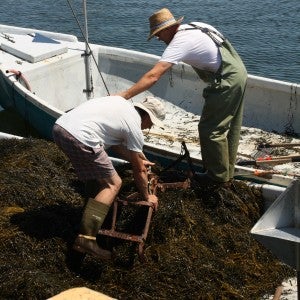There is a productive debate between qualitative and quantitative researchers on what makes the cut when it comes to determining high quality, robust research methods. Those who favour quantitative methods often argue that valid research is based on the scientific method of developing a hypothesis and then using a standardized tool such as a survey or random sample in an attempt to falsify the initial claim. This generally deductive approach is praised for its ability to measure empirical data and reduce researcher bias. However, researchers who prefer qualitative methods would say that the standardized approach may not always accurately represent the complex and dynamic reality of research involving human participants. Qualitative methods aim to embrace the uncertainty inherent in social-ecological systems by relying on a more inductive approach. This means that research outcomes and insights emerge from the participants’ lived experiences. For example, in-depth interviewing, community mapping exercises, and participant employed photography (e.g., photo-voice) allow participants the opportunity to contribute their own perspective to a wide-range of research questions. Some researchers combine both quantitative and qualitative techniques for a ‘mixed methods’ approach in an effort to draw on the strengths of these different research strategies.

My work with local fisheries on the South Shore of Nova Scotia follows a qualitative methodology. As part of my master’s thesis research, I am interviewing fishermen about the economic, ecological, and social challenges they are facing and what they are doing to adapt to changes in their livelihoods. The raw quantitative data others are collecting on changes in the fisheries is incredibly important, but I have found it is even more valuable when paired with rich local observations from people whose livelihoods depend on recognizing and understanding changes on land and at sea.
Employing a qualitative approach in my work has allowed me the freedom to explore unexpected issues that arise from the experiences and worldviews of these individuals. For example, I had not anticipated that setting and collecting membership fees or where fishermen place their lobster traps on the wharf could be so complicated. These governance decisions are determined through a complex interaction of federal laws, community norms, and traditional rivalries. Upon initially discovering some of the nuances of these decision-making processes, I was able to include more in-depth questions about the fairness of decisions and the overall social climate at the wharf in some of my later interviews. Additionally, I have realized that many fishermen rely on alternative fisheries such as harvesting seaweed, clams, or baby eels (known as elvers) for supplemental income either as an alternative to or in addition to Employment Insurance claims in the fishing offseason. Rather than attempting to maintain a random sampling of fishermen as I might if I were employing a quantitative approach, I have made a point of specifically seeking out fishermen who are involved in alternative industries in order to represent the broadest possible range of perspectives on opportunities available to fishermen in the offseason. The qualitative theory behind my research means that adjusting my interview questions to better represent the issues my participants raise or seeking out specific participant perspectives only enhances the depth of the topics I am covering rather than detracting from the consistency of my methods.

Sitting in each fisherman’s living room, drinking weak instant coffee and looking through pictures of their grandchildren, I feel privileged to be openly accepted into their lives for a brief period of time. Letting someone tell their story the way they want to tell it can be empowering. It highlights the information they find important but also allows me to focus on the human experience of environmental change. Moreover, the information I get from fishermen and fish buyers is balanced with interviews from key informants such as university professors and personnel from the federal Department of Fisheries and Oceans.Although a rigid and strongly quantitative approach is appropriate for certain contexts, in my case, this would have constrained my ability to include emerging issues of importance to my participants, relying instead on my own narrow understanding of the current issues facing fishermen. I’ve found that using a flexible, participant-centered approach has resulted in interviews that are rich in emotional detail, full of specific ecological knowledge, and that give a voice to fishermen who often express frustration over not being heard. In addition to learning about changes and adaptations in the fishing industry, I have also had the opportunity to hear stories about how people are being affected by this information on a daily basis. Instead of gathering numerical temperature or sea level rise data I am hearing about how the beach they used to play at as kids is now underwater, or how the season for herring spawning is getting later and later each year.

Although I initially approached this project with a general idea of my intended research direction, it is important to recognize that my research has continued to evolve. Success in my research has been dependent on my ability to facilitate discussion and synthesize a vast array of different points of view, and by my openness to uncertainty. My analysis is not going to be a matter of simply adding up the number of responses to a particular question. Instead, it will take a great deal of time to wade through a vast pool of facts, opinions, and anecdotal evidence. However, when it comes to research involving complex social-ecological interactions, the more frustrating, intricate, and contentious the data, the better represented the problem really is.